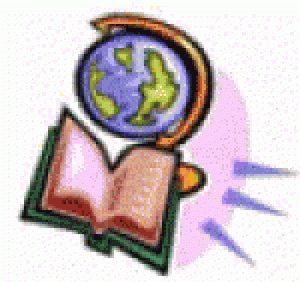Women Heroes of World War II: The Pacific Theater: 15 Stories of Resistance, Rescue, Sabotage, and Survival Reviewed By Lois C. Henderson of Bookpleasures.com
- By Lois C. Henderson
- Published January 6, 2017
- History
 Lois C. Henderson
Lois C. Henderson

Reviewer Lois C. Henderson: Lois is a freelance academic editor and back-of-book indexer, who spends most of her free time compiling word search puzzles for tourism and educative purposes. Her puzzles are available HERE and HERE Her Twitter account (@LoisCHenderson) mainly focusses on the toponymy of British place names. Please feel welcome to contact her with any feedback at LoisCourtenayHenderson@gmail.com.
Author:
Kathryn J. Atwood
Publisher: Chicago Review Press Incorporated
ISBN: 9781613731680
For any youngster who is interested in learning more about World War II and the heroic role played by women in bringing about an end to the conflict on the Pacific Front, Kathryn Atwood’s latest masterpiece is an absolute must. Written in a highly accessible style, Title: Women Heroes of World War II: The Pacific Theater: 15 Stories of Resistance, Rescue, Sabotage, and Survival should appeal, in its directness and simplicity, to any tween or younger teen, no matter their reading level.
Atwood takes great care to contextualize the exploits of the women whose adventures she describes in such a way as to make the most important aspects of the war in the Pacific clear, even to those who have relatively little knowledge of the course of World War II. Whereas their history textbooks might stick to describing the progress of the war in a dry and objective way, Atwood brings the arena of conflict to life by personalizing it in terms of 15 of the most notable women whose contribution to the war effort made a significant difference to the life of those involved.
The book is divided into the four geographic regions of China (featuring Peggy Hull, Minnie Vautrin and Gladys Aylward), the Philippines (featuring Elizabeth MacDonald, Denny Williams, Margaret Utinsky, Yay Panlilio, Claire Phillips, and Maria Rosa Henson), Malaya, Singapore, and the Dutch East Indies (featuring Sybil Kathigasu, Elizabeth Choy, Vivian Bullwinkel, and Helen Colijn) and Iwo Jima and Okinawa (featuring Jane Kendeigh and Dickey Chapelle). The backgrounds of the women involved are as mixed as were the roles that they played in easing the suffering of others (often at great cost to themselves and to their own security and peace of mind, as well as that of their families), whether through physical service, in the form of nursing and caring for the more vulnerable, or as war correspondents, who let those who were not on the battlefront know of the actual conditions that combatants had to endure.
Apart from the overview of World War II, as it was waged on the Pacific front, that is given in Atwood’s introduction to the book (covering the well signposted topics of World War I and the Paris Peace Conference, the rise of fascist Japan, Japan and China, and the Lords of the Far East), the descriptions of the individual heroes are interspersed with relevant explanatory inserts on modernizing Japanese women, peer pressure and the Japanese soldiers in Nanking, outcome of the Nanking Massacre, and Japanese prime minister Tojo’s speech given in defense of the attack on Pearl Harbor, among many others. The text contains a number of black-and-white photographs of the heroes themselves, often in interaction with others around them, providing additional insights into the nature of these strong and resourceful women. Each chapter is accompanied by a list of recommended reading, turning the book into a treasure trove of information that invites the reader to explore the subject further.
Any teacher using the book as a launch pad for classroom discussion is likely to appreciate the insightful set of questions set at the end of the text, which is followed by suggested reading on the topic of Japanese resistance to fascism. In addition, illuminating notes are provided on the primary sources from which material was obtained. The bibliography that appends the body of the text is also extremely helpful, especially in terms of indicating those sources that are particularly suited to younger readers. A comprehensive, yet relatively simply structured, index concludes the book, and should prove extremely helpful for those who lack sufficient time to read the whole work, although, once a youngster has started reading Women Heroes of World War II: The Pacific Theater, it is highly likely that they will require no further inducement to continue reading this enthralling account until the very end.
